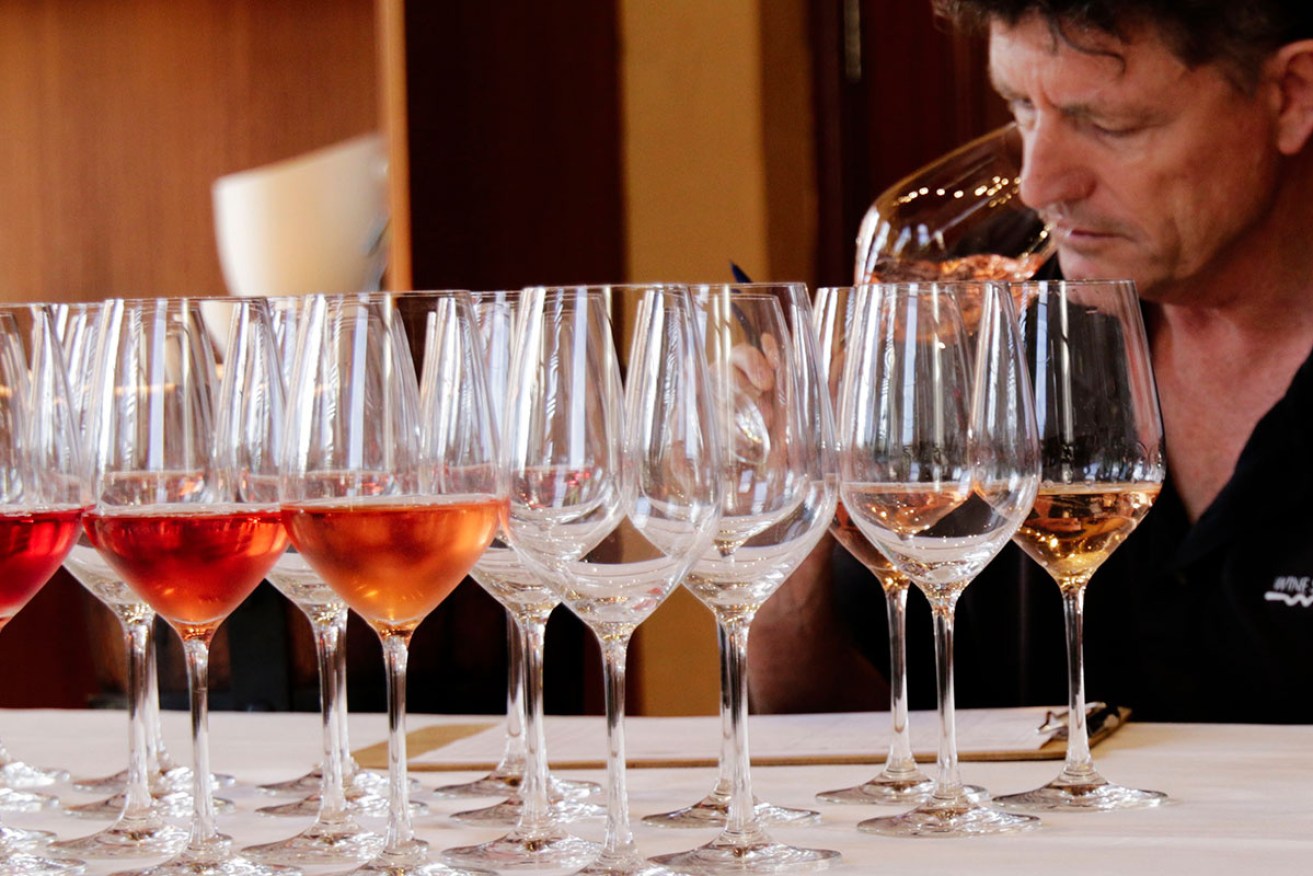How to taste wine – Wine Cellar Essentials


Learning how to taste wine may seem daunting, but it’s easier than you might think. Photo: Wine Selectors
Wine tasting shouldn’t be daunting or complicated, you just need to know a few basic steps and a willingness to develop your palate.
Before we go any further, make sure to watch this short video by our friends at Wine Selectors, as their Tasting Panel Co-Chair (and 2019’s Len Evans Tutorial Dux!) Adam Walls shares some tips that’ll have you tasting wine like the professionals in no time!
Now that Wallsy’s tips have wet your whistle, let’s drill down a little more into the basic steps of wine tasting.
1. The wine tasting environment
Set yourself up somewhere with neutral lighting and not too many strong or distracting odours – it’s much harder to appreciate the subtleties of taste if you can smell last night’s curry or freshly spritzed perfume.
Ideally your environment should be temperate.
Most wine professionals assess the wine at room temperature, so they can appreciate the wine’s character in full.
2. Colour of the wine
Observe the wine in your glass.
Tip the glass away from you and preferably have a white or neutral tablecloth as background. Examine the clarity of the wine and the intensity and depth of its colour.
The look, colour and opacity of a wine can tell you a lot about it, i.e. whether it is aged, how much alcohol it contains, and the potential grape variety.
3. Aroma of the wine
Swirling wine is not just for fun, it helps to release the wine’s aromas.
Start by taking some short, sharp sniffs and think about first impressions before moving to longer inhalations through your nose.
What aromas can you identify? Think about whether you detect citrus or berries, as opposed to individual fruits. This is far less intimidating and will help to get you started.
Each grape variety has a signature aroma known as a primary aroma. For example, Chardonnay has stonefruit note, and Riesling is known to smell of limes.
Secondary aromas relate to how the wine has been made and may present as toasted wood and vanilla from oak barrels, stalk notes from fermentation, or yeast notes from ageing on lees in sparkling wine.
Tertiary aromas reveal themselves in aged wine.
Earth, leather and cedar often appear in red wines, with honey, hay and citrus curd commonly appearing in aged whites.

Giving your wine glass a swirl helps introduce a little oxygen, helping open up the wine’s characters.
4. The taste of the wine
Start by taking a small sip and inhaling some air at the same time. It might sound strange, but it lets you assess the fullness of the wine’s flavour in your mouth.
Think about the initial impression the wine makes on your tongue, followed by the flavours, texture and the length. Does it taste salty? Sour? Sweet? Or bitter?
Consider the acidity of the wine. The acidity or ‘sharpness’ of the wine will help you to determine whether it comes from a cool-climate region, or if the grapes were picked early.
Alcohol levels can affect the feel of wine in your mouth. Is the texture rich or very fine? Higher levels of alcohol can add more body and texture and give an impression of sweetness.
If it’s a red wine, can you taste the tannins? Tannins create the drying sensation you can feel on your palate, with every grape variety showcasing different levels.
Finally, how does the wine ‘finish’ in your mouth? Does it stick around or disappear instantly? Consider the wine’s lasting impression on you and whether you want more.
Make detailed notes as you go. Was it a well-balanced wine? What fruit flavours could you discern? Was it full-bodied?
The more you practise wine tasting, the more you will note varietal similarities and differences, learning about what you love most and what you dislike.
And there you are – that’s how to taste wine like a professional. And remember: Practice makes perfect, so happy tasting!
Get a taste for top wines
Want to get your personal wine cellar well and truly stocked so you can really work on those wine tasting skills?
Then make sure to check out Wine Selectors’ enormous range of wines and mixed wine cases.
From wines that are ideal for everyday entertaining to the best of our regions and top shelf, special occasion wines, you’re sure to find your next favourite, with each bottle handpicked by Wine Selectors’ expert Tasting Panel.
It’s simply a better way to buy Australian wine!